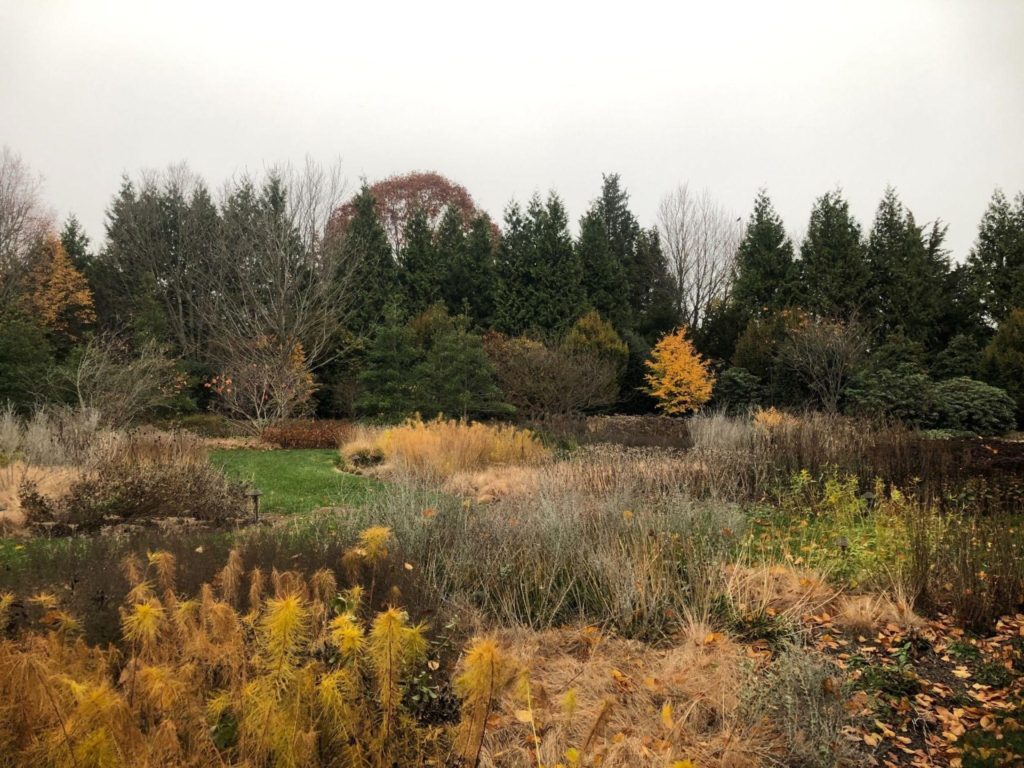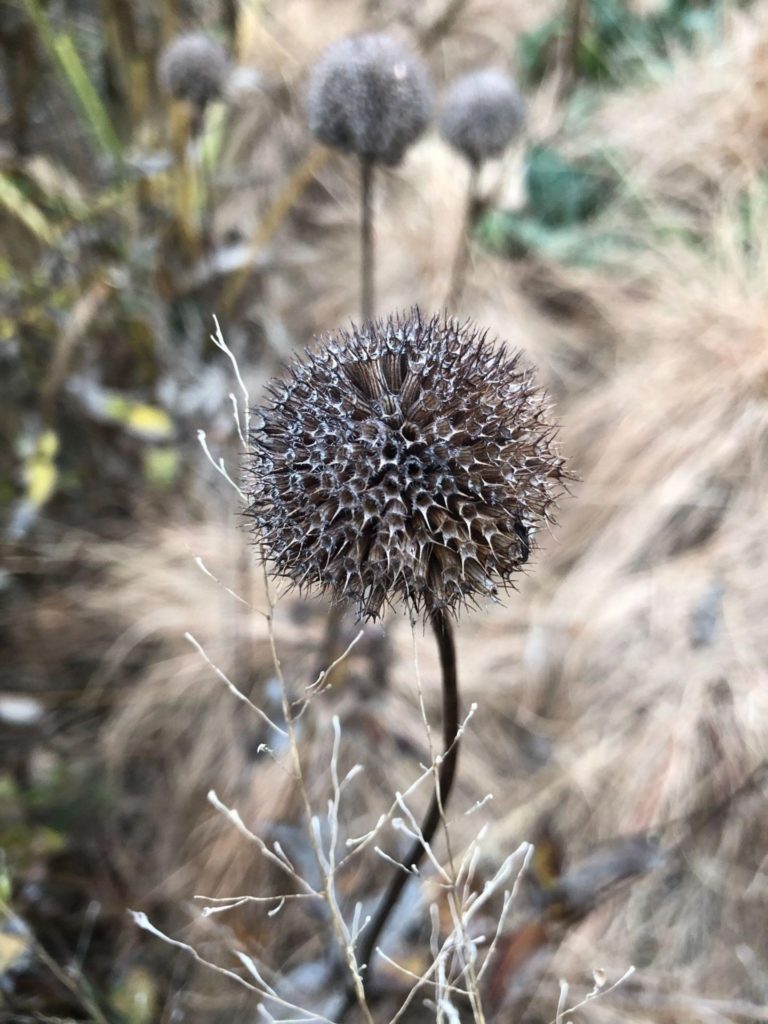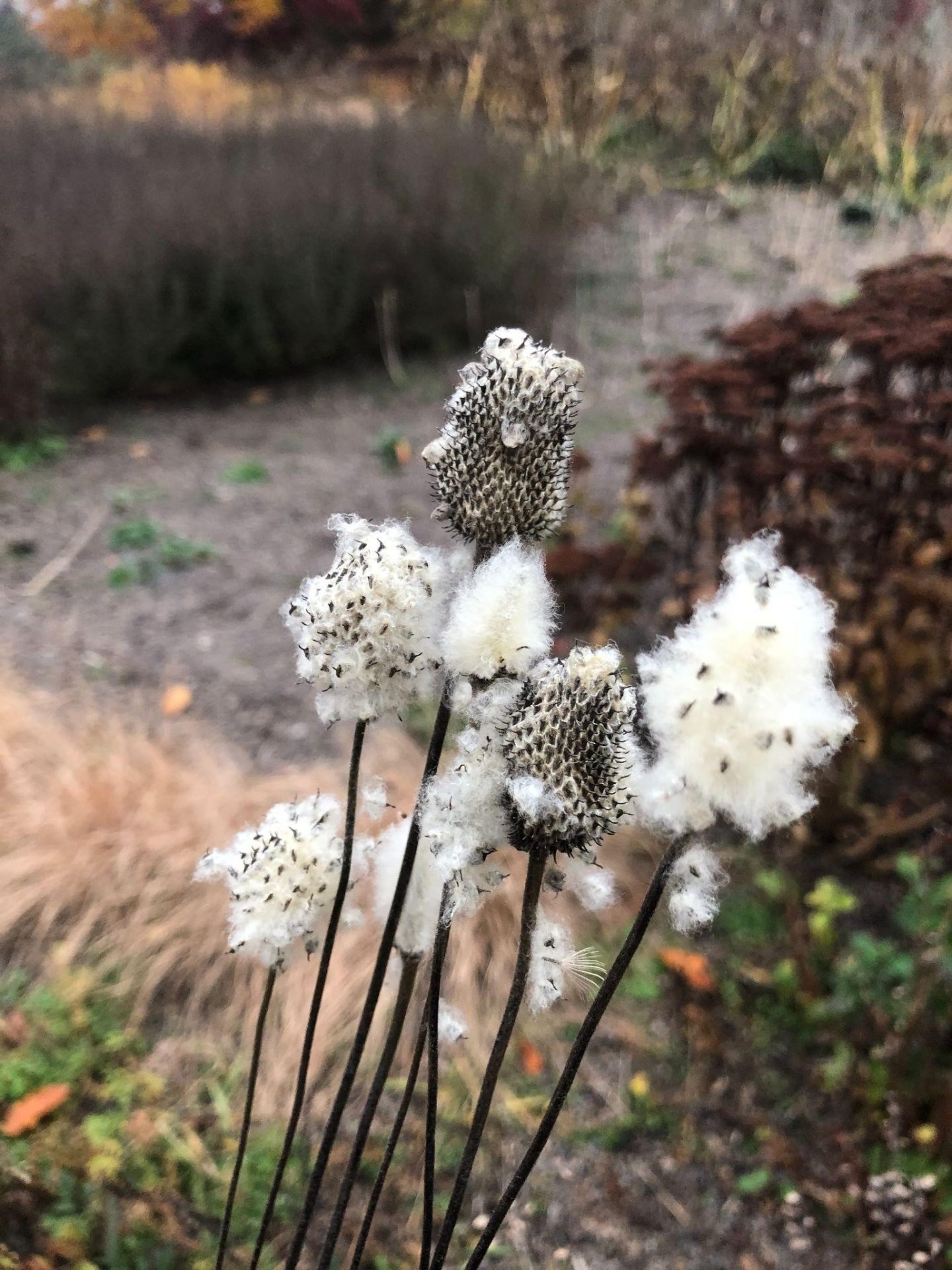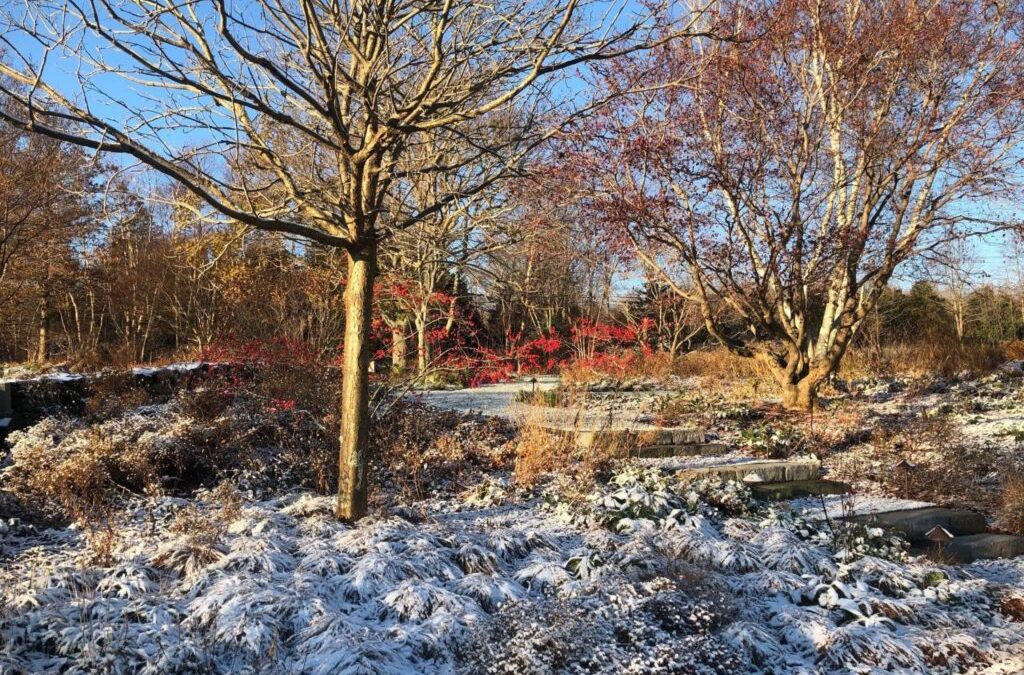Cleaning up our gardens in the fall is something we all often tackle in October and November of each year. However, have you ever stop to think more about why and the reasons for certain techniques? Fall clean-up, at its core, has little to do with the health of the garden because many of the publicized practices have very little benefit for plants or soil health. In New England, we often treat our garden as a three season aesthetic. However, the elimination of aesthetic elements in the landscape removes what could be an attractive composition from November to March. When we “clean up” our gardens too early we miss out on beautiful seed heads, changing foliage, various textures, and interesting plant structures. Plus, letting plants go to seed will help populate our gardens with new seedlings in the spring and provide food for birds and mice. A light snow on any seed head will always spark interest!
In addition, many beneficial insects over winter in the hollow stems of our plants and these insects are an important part of keeping a balanced ecology in our yards. The insects also play an important role in the decomposition of leaves and other plant material that ultimately become the nutrients for plants. While removing leaves from our turf grass is beneficial, they should be left in our garden beds to provide cover for the winter that will break down into a leaf mulch by spring. Of course, there are exceptions with leaf removal including diseased foliage from things like Apple Trees and Roses to prevent the inoculation of certain fungal diseases the next year.
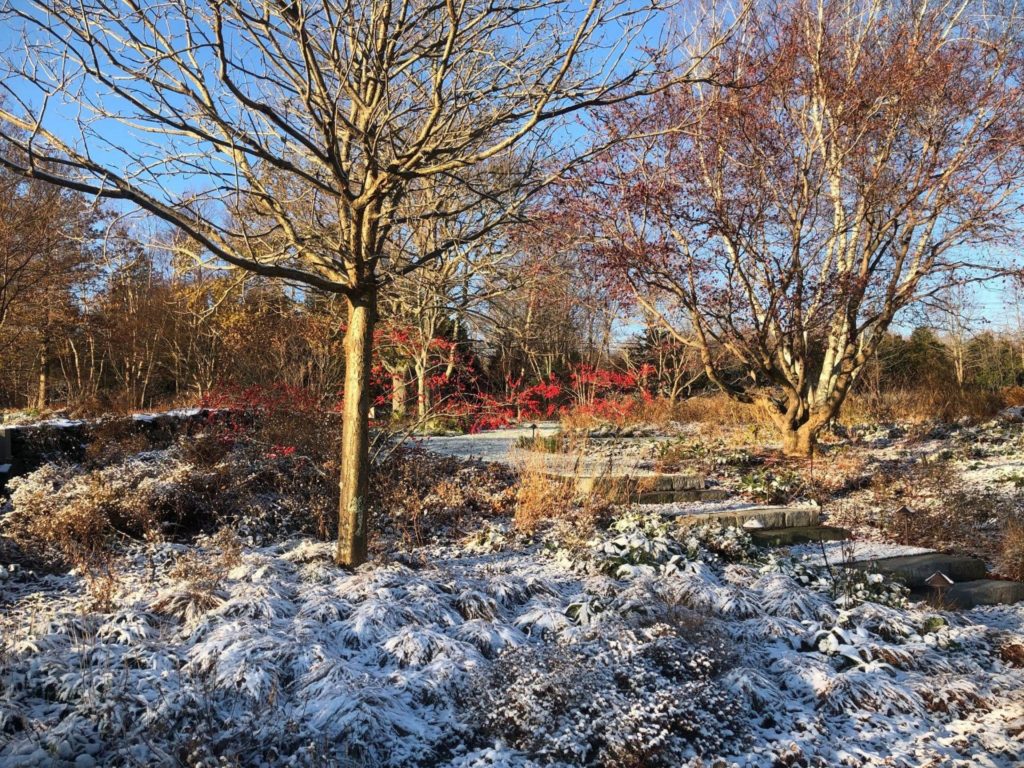
Below are 5 Basic Tips for Ecological Gardening in the Fall.
–Leave the leaves! This is the best mulch for our gardens and will help build up the organic matter in the soil as it breaks down over time providing nutrients essential for plant growth. Leaves collected from our lawns should be stored in a pile for the winter and used as mulch come spring.
– Do not cut back perennials or annuals. You’ll be surprised how long certain plants will continue to bloom and provide beauty well into November. Some tender plants like hosta and most annuals will take a hit with the first few frosts, but stout stems and seed heads will often remain. Cutbacks are not necessary until March/April prior to the emergence of new growth.
–Add new plants! Fall is a perfectly good time to plant trees, shrubs and perennials. As plants begin their senescence they begin to direct energy back into their roots systems. With cooler temps and sufficient moisture, the fall allows plants to begin establishment and start new root growth. Still be mindful of watering as new plants always need to be monitored. They will also need the same attention throughout the following season.
–Transplant. I look at plants like furniture in a room; if you move a few things around it can change the whole vibe. Late fall is a great time to transplant trees, shrubs and perennials. Wait until the plant has gone fully dormant, for deciduous trees and shrubs this means the leaves have dropped and the buds are set for next year. For perennials this is typically when the plant has gone “brown” and has fully mature seeds. Evergreens can be transplanted as well, but proper watering is crucial to prevent desiccation of the leaves before transplanting. This can also be a good time to prune woody material for structure and form.
–Envision next year. I always use the fall and winter to brainstorm what will come next in the garden. Winters are long in New England and I try to incorporate as much interest as possible for those months. Interesting bark like the peely white curls that come off birches or the bright red stems of the red-twigged dogwood add structure and color to a winter landscape. Evergreens like holly and cedar keep things green, provide food for birds and shelter for many species. Statuary and stones can also add interest and structure.
In conclusion, Fall is a time we can still garden and enjoy the landscape. Instead of treating it as the end, think of it as an extension of the season. The health of a garden all starts with great soil. Help shift the mysterious “fall clean-up” paradigm and talk to your neighbors about why you’re changing your approach. Land stewardship and gardening at home should be a fun and integrative way to deepen your connection to your property, alongside family and friends. It’s not a battle but more of a choreographed dance, so go with the flow and have a good time!
